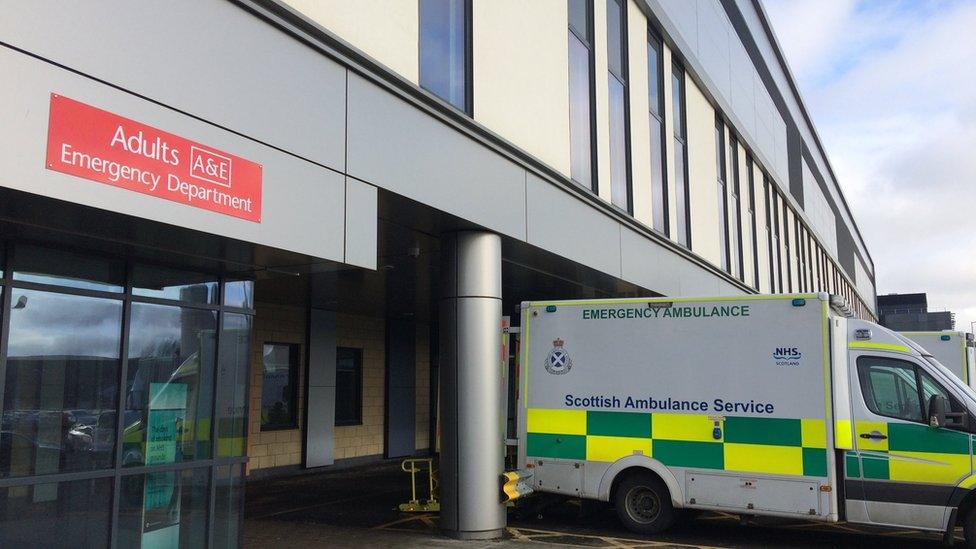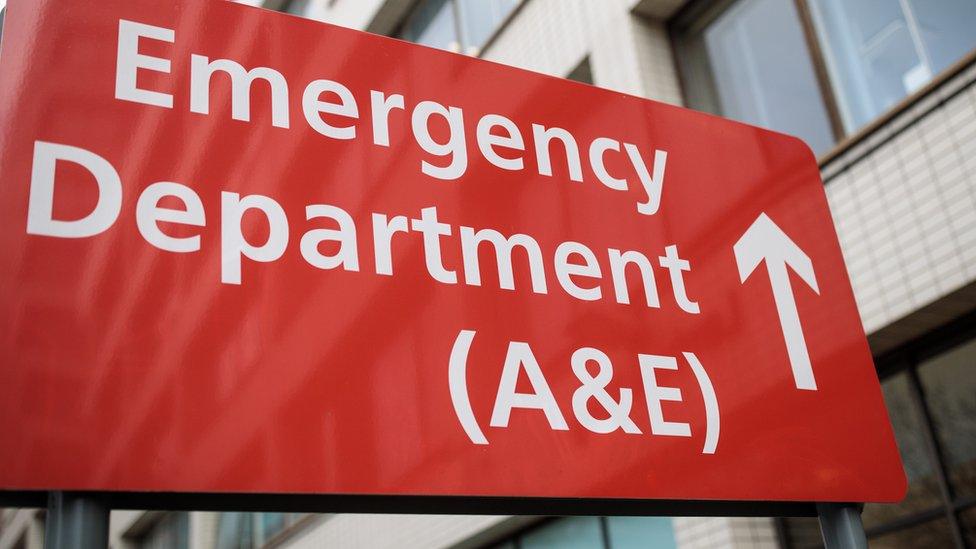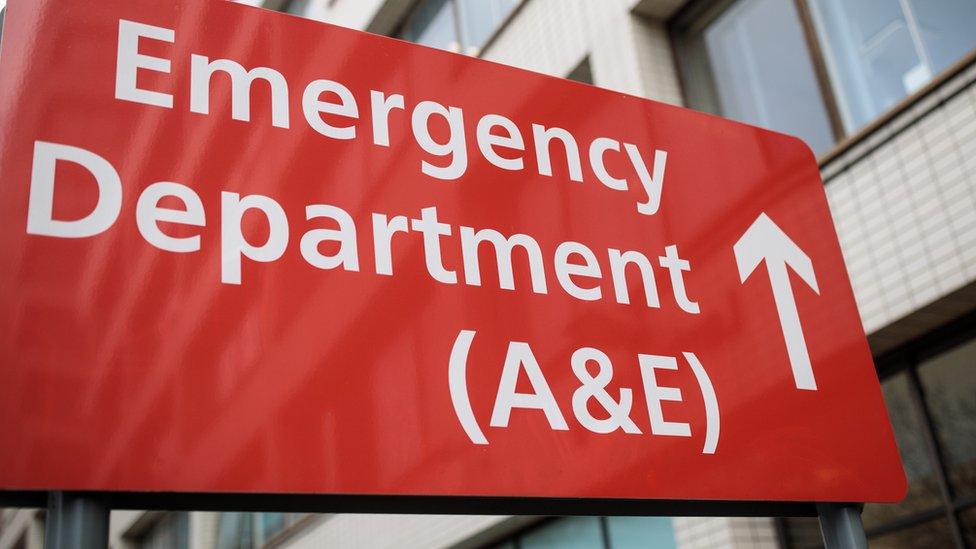Scotland's A&E waiting times worst on record
- Published

Weekly figures show a record number of A&E patients waited more than four hours
Performance on waiting times targets at Scotland's hospital A&E units has hit a new low.
Figures for the week ending 11 September, external showed just 63.5% of patients were dealt with within four hours.
Health Secretary Humza Yousaf said the figures were "not acceptable" and he was determined to improve performance.
Scottish Tory health spokesman Dr Sandesh Gulhane said the figures showed the "crisis in A&E is not merely continuing, but deepening".
The Scottish government target is that 95% of patients attending A&E are seen and subsequently admitted or discharged within four hours.
It began publishing weekly A&E statistics in February 2015 over concerns that the figure had dropped to 86%.
The figure has been below 70% since May and the previous low was 64.8% at the beginning of July.
In the latest weekly figures from Public Health Scotland, 27,097 attended A&E and a record number waited more than four hours (9,895).
The number of people waiting more than eight hours was 3,367 - a new high - and 1,257 people waited longer than 12 hours.


Doctors working in emergency medicine have issued stark warnings recently about the impact of long waits in A&E. It is simply not safe, and patients are dying as a result, they say.
Like the rest of the NHS, a major part of the problem is bed capacity in hospitals.
Too many beds are taken up with patients who don't need hospital treatment any more but can't get home because of pressures in social care.
But there are also more patients who need to stay in longer because they are sicker due to delays managing their condition because of pandemic. It's a worrying cycle of growing need and not enough capacity.
Some people will turn up at A&E for more minor conditions because they don't know where else to go, but the growing numbers of patients waiting eight, 12 or even 24 hours is an indication of a more widespread crisis in the NHS.

Impact of the pandemic
The health secretary - who has come under increasing pressure to fix the problem before an expected spike in admissions during the winter - said accident and emergency departments were working under significant pressure.
Mr Yousaf said the impact of the pandemic continued to affect health services across the rest of the UK and globally.
Figures for NHS England, which are released monthly,, external showed 71.4% of patients were seen within four hours in August, although the performance at the busiest type 1 A&Es was just 58%.
Mr Yousaf said: "Notwithstanding this, I am clear that the current level of performance is not acceptable, that is why I am determined to improve performance and am working closely with boards on a number of measures to reduce pressure on hospitals.

Dr Gulhane, Scottish Tory health spokesman, said the figures were extremely alarming for patients and staff because excess delays lead to avoidable deaths.
"It's especially concerning that these worst-ever stats come well ahead of the traditional winter peak demand in A&E," he said.
"The health secretary can't ignore these dire stats. He must come up with an alternative strategy to tackle this crisis in Scotland's NHS, as his flimsy Covid Recovery Plan clearly isn't working."
Scottish Labour health spokeswoman Jackie Baillie said the "ridiculous" lengths of waits for emergency care would cost lives.
"If we are to avoid a full-blown humanitarian crisis this winter then the government must act now," she said.
Scottish Lib Dem leader Alex Cole-Hamilton said emergency care was "overwhelmed" and staff were at their "wits' end", adding that the Scottish government's NHS recovery plan had "failed".
Related topics
- Published12 July 2022

- Published19 April 2022

- Published29 March 2022
